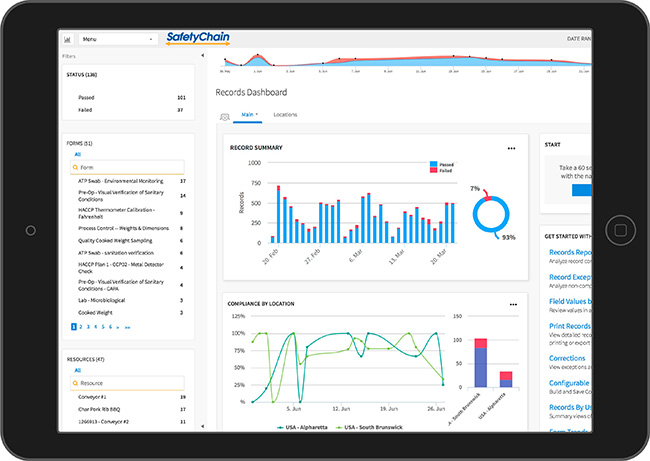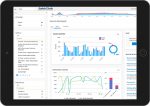As companies are hit with a massive amount of information as a result of new technology, proper management of data intelligence can be difficult. The key is to be able to translate the data into useable information to drive improvements in processes, products and business operations. A new tool aims to do just that—help companies boost operational margins using real-time data intelligence, from supplier performance to trends to safety and quality processes, across an organization.
Launched earlier this week, SafetyChain Analytics can also help companies spot problems before they balloon into larger issues that affect product quality. Barry Maxon, CEO of SafetyChain, explains why the company developed the tool and how it can help food companies save money by being more efficient.
Food Safety Tech: What was the impetus behind developing this tool?

Barry Maxon: The food and beverage industry historically is a business that has tight operating margins. At the same time, companies spend a tremendous amount of money every year collecting compliance data. If you walk through any food and beverage facility, you’ll see people writing down data on paper and putting it in filing cabinets or a spreadsheet. There’s already a tremendous amount of data being collected. We wanted to help companies go beyond collecting compliance data to satisfy their records for their auditors; we wanted to harness that data so they can begin to use it to drive operational excellence. That’s what’s going to make the difference in moving the needle on a company’s bottom line and their operating margins—the ability to leverage all the data they’re collecting to gain insights into how their business is operating and use it to improve their processes, products and operations.
FST: How does it address challenges that food businesses experience? How does it streamline their workflow?
Maxon: Companies are being squeezed from all directions—they need to do more with less, perform at the speed of business today, and remain up to date with all the different compliance standards—be it regulatory, industry standards from GFSI, and even down to customer specific compliance level. There’s a tremendous amount of demand being put on food companies. Yet at the same time, all of these demands typically require greater cost, and they’re being challenged to do more with less and achieve greater economy with their businesses to actually improve their bottom line. It’s a double whammy—improve your bottom while also having greater demand placed on your business—competitively, and from a regulatory and compliance perspective.
There are a lot of processes that have been fundamentally manual in the past, on paper and spreadsheets and in filing cabinets. We’ve talked to companies that say they have people spending hours a day just billing out paperwork and putting numbers into spreadsheets. And we have multi-billion-dollar industries still running on spreadsheets. As nice as a spreadsheet is, it’s a 40-year old software technology that came out in 70s. We’re trying to use new and innovative tools so companies can perform in this new era of technology and use it to benefit their business in multiple ways.
Food Safety Tech: Who are the main product users?
Maxon: Your user base is anyone in the organization who touches safety, quality or compliance from an operational standpoint.
Often the front-end users are collecting and reviewing the sets of data. One of the key elements of the tool is to deliver the right data to the right user in real time. In the past, one of biggest challenges for food companies is that they may run for many hours before realizing they are out of compliance. The idea is to give front-line users have an immediate access to data that prompts them when they’re trending into a direction where they need to take preventive action.
At the same time, managers and executives have access to the tool so they can mine the data, run the reports, and see process control charts.

FST: Are there different security controls for this software?
Maxon: Absolutely. You can organize it so users only see what matters to them. That’s really the key to keeping it simple. Data can very quickly become overwhelming. We’re trying to deliver prebuilt dashboards and reports, and organize the data to make it intuitive. We’re also trying to leverage data on an exception-based management principle. It used to be, in more manual paper-based processes, that a supervisor had to review every single record and sign off on it. Here, with automation in software, everything that passes compliance goes through the system; you don’t need to look at it—it will immediately highlight where you have exceptions in your process so you can quickly take corrective action and make sure everything is resolved before it gets further downstream.
Continue to page 2 below.


